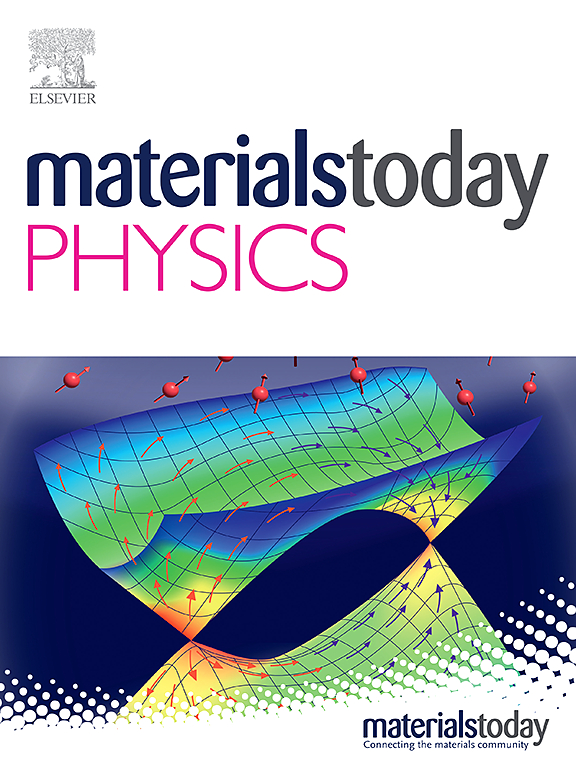Organic/inorganic heterointerfaces engineering for balanced charge distribution
IF 9.7
2区 材料科学
Q1 MATERIALS SCIENCE, MULTIDISCIPLINARY
引用次数: 0
Abstract
Subnanometer-scale lithium fluoride (LiF) layer has been widely employed to enhance electron injection between Al electrode and organic electron transport layers (ETL). However, thermally evaporated ultrathin LiF exhibits incomplete substrate coverage and generates substantial defect-induced charge trapping centers during operation, resulting in poor organic/inorganic interfacial characteristics. In this work, a composite electron injection layer (cEIL) was constructed by combining 8-Quinolinolato lithium (Liq) with excellent interface characteristics of organic/inorganic transition and LiF with strong polarity, which significantly improved the surface potential distribution and achieved balanced charge distribution. The optimized perovskite light-emitting diodes (PeLEDs) demonstrated remarkable electroluminescence (EL) performance enhancement: the external quantum efficiency (EQE) increased from 15.74 % to 20.53 %, and the current efficiency (CE) improved from 73.39 cd/A to 98.59 cd/A. This study provides new insights for organic/inorganic interface engineering in high-performance optoelectronic devices.
平衡电荷分布的有机/无机异质界面工程
亚纳米级氟化锂(LiF)层被广泛用于增强铝电极与有机电子传递层(ETL)之间的电子注入。然而,热蒸发超薄LiF表现出衬底覆盖不完全,并且在运行过程中产生大量缺陷引起的电荷捕获中心,导致有机/无机界面特性较差。本研究将具有优异有机/无机过渡界面特性的8-喹啉酸锂(Liq)与具有强极性的LiF结合,构建了复合电子注入层(cEIL),显著改善了表面电位分布,实现了电荷分布的平衡。优化后的钙钛矿发光二极管(PeLEDs)的电致发光(EL)性能显著提高:外量子效率(EQE)从15.74%提高到20.53%,电流效率(CE)从73.39 cd/A提高到98.59 cd/A。该研究为高性能光电器件的有机/无机界面工程提供了新的见解。
本文章由计算机程序翻译,如有差异,请以英文原文为准。
求助全文
约1分钟内获得全文
求助全文
来源期刊

Materials Today Physics
Materials Science-General Materials Science
CiteScore
14.00
自引率
7.80%
发文量
284
审稿时长
15 days
期刊介绍:
Materials Today Physics is a multi-disciplinary journal focused on the physics of materials, encompassing both the physical properties and materials synthesis. Operating at the interface of physics and materials science, this journal covers one of the largest and most dynamic fields within physical science. The forefront research in materials physics is driving advancements in new materials, uncovering new physics, and fostering novel applications at an unprecedented pace.
 求助内容:
求助内容: 应助结果提醒方式:
应助结果提醒方式:


